Tackling child poverty - fourth year progress report 2021 to 2022: annex A - measurement framework
Measurement framework with the latest data on the drivers of child poverty. The 23 indicators in the child poverty measurement framework are intended to monitor these drivers of poverty. They form part of a wider monitoring and evaluation strategy.
Driver: Costs of living
Indicator 8: Childcare affordability
Percentage of households paying for childcare for a child aged between 0 and 11 that say they find it difficult or very difficult to afford childcare.[2]
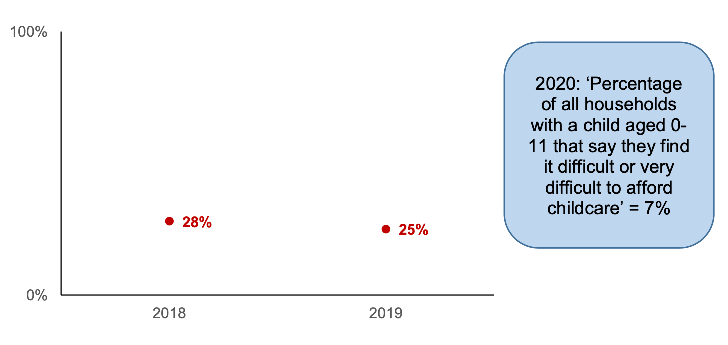
How this indicator relates to the child poverty targets:
- Relative poverty √
- Absolute poverty √
- Low income + material deprivation √
- Persistent poverty √
Childcare can be a significant cost for households with children. And a lack of affordable childcare can limit opportunities for paid employment
Indicator 9: Childcare open in holidays
Percentage of children's day care[3] places that are in settings that operate during the school holidays.
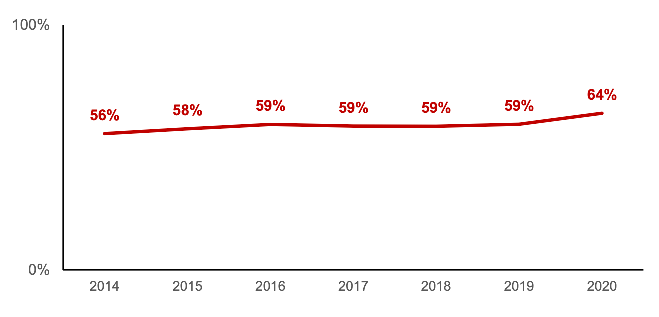
How this indicator relates to the child poverty targets:
- Relative poverty √
- Absolute poverty √
- Low income + material deprivation √
- Persistent poverty √
A lack of childcare availability during the school holidays can limit opportunities for paid employment.
Indicator 10: Childcare available outside of school hours
Percentage of children's day care places that are in settings that are open before, during and after school hours.
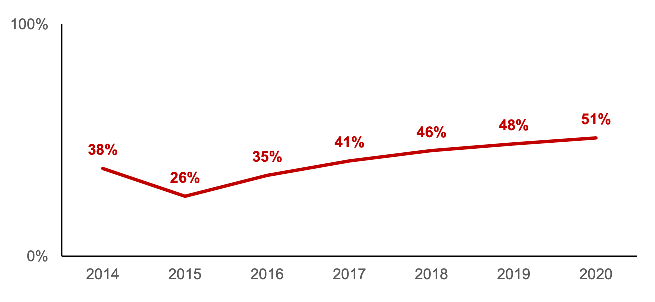
How this indicator relates to the child poverty targets:
- Relative poverty √
- Absolute poverty √
- Low income + material deprivation √
- Persistent poverty √
A lack of childcare availability outside school hours can limit opportunities for paid employment.
Indicator 11: Satisfaction with public transport
Percentage of low income households (bottom three income deciles) with children that are very or fairly satisfied with the quality of public transport. Figures for all households with children are also provided for context.
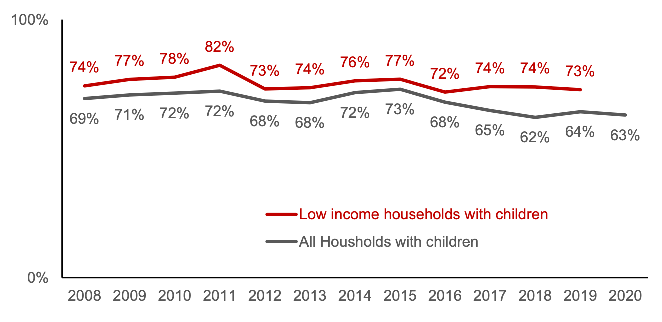
How this indicator relates to the child poverty targets:
- Relative poverty √
- Absolute poverty √
- Low income + material deprivation √
- Persistent poverty √
Low income households are much less likely to have access to a car than high income households. Along with affordability, other aspects of public transport, such as limited frequency and timetable constraints, can make it difficult for people without access to a car to co-ordinate work, childcare and other activities, potentially limiting opportunities for paid employment.
Indicator 12: Housing affordability
Percentage of income spent on housing by low income households (bottom three income deciles) with children. Figures for all households with children are also provided for context.
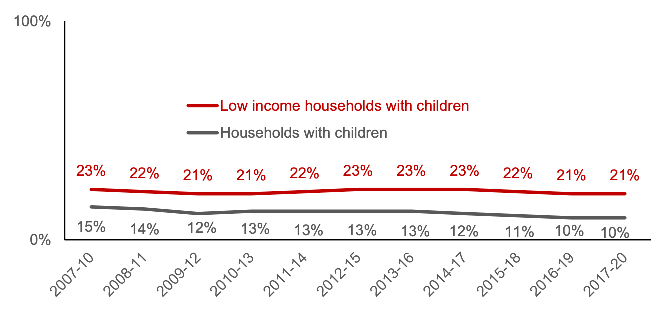
How this indicator relates to the child poverty targets:
- Relative poverty
- Absolute poverty
- Low income + material deprivation √
- Persistent poverty
Housing costs are often the largest single cost a household will face, particularly for those on low incomes. All four of the child poverty targets are based on the income that households have left after housing costs have been deducted.
Indicator 13: Fuel affordability
Median ratio of fuel running costs to net household income (after housing costs), low income households (bottom three income deciles) with children.
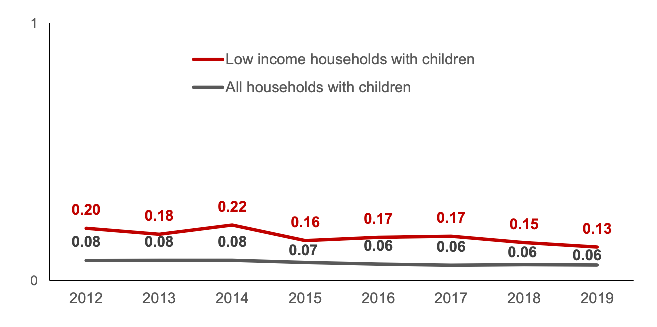
How this indicator relates to the child poverty targets:
- Relative poverty
- Absolute poverty
- Low income + material deprivation √
- Persistent poverty
Fuel costs are not deducted from income for the purposes of determining whether a household is in income poverty. They do, however, affect the risk of material deprivation, as families spending a greater percentage of their income on fuel will be less likely to afford essential goods and services.
Indicator 14: Food affordability
Percentage of income spent on food and non-alcoholic drinks by low income households (bottom three income deciles) with children. Figures for all households with children are also provided for context.
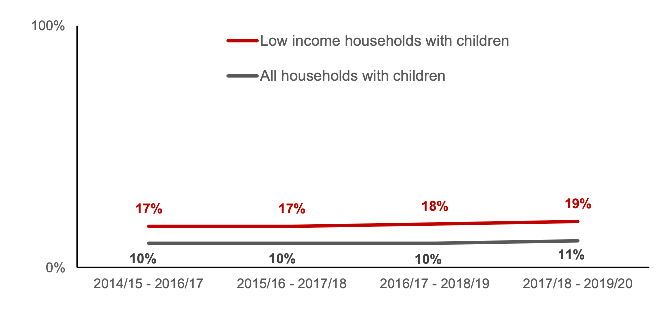
How this indicator relates to the child poverty targets:
- Relative poverty
- Absolute poverty
- Low income + material deprivation √
- Persistent poverty
Food costs are not deducted from income for the purposes of determining whether a household is in income poverty. They do, however, affect the risk of material deprivation, as families spending a greater percentage of their income on food will be less likely to afford essential goods and services.
Contact
Email: tcpu@gov.scot
There is a problem
Thanks for your feedback